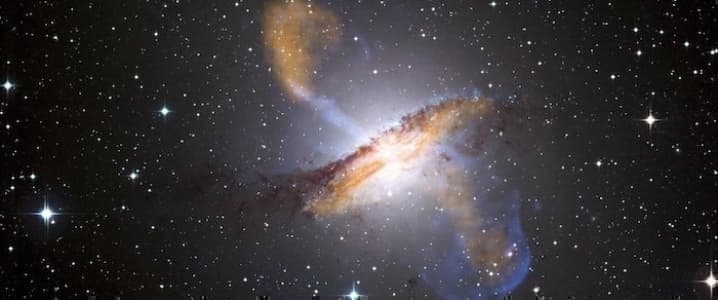When two students recently published a paper saying they were building an elevator from Earth to the Moon, it sounded a little far-fetched, if not unnecessary. After all, the Moon may have a lot of mineral resources, but even with an elevator it would be a tough and very expensive job to mine them and transport them back to Earth.
Unless, of course, there was a rocket fuel station on the Moon.
Traveling to the Moon tends to be prohibitively expensive because the rockets must bring along an excessive amount of fuel in order to ensure they can make the return journey safely.
“Just imagine if you had to drive out to Denver and there were no gas stations along the way and you had to bring all your gas with you from New York,” one professor of mining explained it to The Verge. “You probably couldn’t do it in your car. You would have to tow all the fuel you need.”
Now imagine there was a gas station, on the Moon, and it had enough gas to fuel a lot of journeys from Denver back to New York.
NASA confirmed there was ice on the Moon last year. Now, it is preparing to launch an exploration mission there that will, among other things, confirm the exact location of the ice. That confirmation could be a game-changer Related: Shale Stocks Are Suffering From A Sentiment Problem
The Volatiles Investigating Polar Exploration Rover, or VIPER, is scheduled to be launched in 2022. The size of a golf cart, the rover will land on the south pole of the Moon “to get a close-up view of the location and concentration of water ice in the region and for the first time ever, actually sample the water ice at the same pole where the first woman and next man will land in 2024 under the Artemis program,” NASA said in a statement earlier this month.
The Artemis program has the ambition to revive the United States’ lunar exploration efforts. Scientists will be based on the Gateway, a spaceship in lunar orbit, and will travel from it to the surface of the satellite to explore its mineral resources, in the hopes they would make enough commercial sense to establish a long-term human presence there.
The key to that long-term presence would be fuel.
“I think it’s going to be to build efficiencies in our space economy – there are mining resources, rocket fuel potential, there is solar energy that’s not impeded by the atmosphere,” astronaut Drew Feustel recently told Fox News, commenting on Artemis. “We don’t know what resources are there because we haven’t explored it yet.”
Yet we do know, it seems, that there is water ice on the Moon. What we don’t know for sure if this ice is as plentiful as NASA believes, based on the latest data. If it is, this means the Moon can be home to a major rocket fuel depot.
Why rocket fuel? Because water breaks down into hydrogen and oxygen, and rocket fuel—the sort used to propel a spacecraft into space—is made from hydrogen. A lot of water ice on the Moon means a lot of hydrogen that can then be used to fuel rockets leaving the Moon to the Earth, saving them the hassle—and a lot of the expenses—of towing their return-journey fuel from Earth. Related: Is OPEC Doing Enough To Counter The Looming Oil Glut?
And there is more. That fuel can be transported elsewhere in space, as well, much more cheaply than doing it from Earth. As the Verge’s Loren Grush explains it, the Moon’s gravity is one-sixth of the Earth’s, which means that propelling objects, including spacecraft, into space, requires a lot less energy than it does from the Earth. Less energy equals less fuel, and less fuel equals lower costs
If you can set up fuel depots here and there in space, that would be the beginning of a true space colonization. Imagine a series of fuel depots orbiting the Moon and the Earth, they would be exactly like gas stations along a highway, only in this case it would be a space highway.
This highway, among other things, could ultimately solve the problem with nuclear fusion. The Moon is believed to be home to substantial reserves of Helium-3. The element is scarce on Earth but it is a potentially much more efficient fuel for nuclear fusion reactors than what researchers currently have access to on Earth. Also, a reaction involving Helium-3 is a lot easier to contain, which is part of the problem with nuclear fusion. Now, this problem could be solved by the presence of water on the Moon.
Ten years ago, scientists believed there may be some 300 million tons of water ice on the Moon. New data suggests there may be a lot—a whole lot—more than that, with some areas of the surface made up of 20-30 percent water ice. If the VIPER confirms these amounts after it maps the locations of the Moon’s water ice deposits, this could spell the beginning of a whole new phase in space exploration, including trips to Mars. And of course, it would enable the colonization of the Moon, because the water, besides being broken down into hydrogen and oxygen, can also be used for drinking. Where there’s water, there’s life, after all. And rocket fuel, too.
By Irina Slav for Oilprice.com
More Top Reads From Oilprice.com:
- A Warm Winter Would Be 'Catastrophic' For Natural Gas
- The Key To Iran’s Success In The Face Of Sanctions
- Is Trump Turning The U.S. Military Into 'Oil Pirates'?



















They could also develop solar electricity on a grand scale to help the millions around the world with no access to electricity.
Dr Mamdouh G Salameh
International Oil Economist
Visiting Professor of Energy Economics at ESCP Europe Business School, London